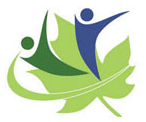Article Title
Measuring the Impact of a Weeklong Fall Break on Stress Physiology in First Year Engineering Students
Download File Format
metadata
DOI
https://doi.org/10.5206/cjsotl-rcacea.2018.2.9
Abstract
Canadian post-secondary institutions are increasingly introducing a fall break into their term calendars, with the stated goal of reducing student stress and improving academic success. We conducted a pilot study around the time of this fall break during which we collected saliva samples to measure the ratio of two metabolic hormones (cortisol and dehydroepiandrosterone (DHEA)) from first-year male engineering students in order to document possible changes in their stress levels before and after the break. Participants self-identified a particular day in the week prior to the break that they considered to be most stressful, followed by a day in the week after the break that was perceived to be equally stress-inducing. A control sample of student engineers was recruited from another university with equivalent academic rigour but without a fall break. Students who experienced the fall break exhibited a marginally lower ratio of cortisol to DHEA after the break than did those who did not experience the break indicating a difference in psychological stress. Since fall breaks are now increasing in popularity, we make the recommendation that it is imperative to empirically investigate their impact on student mental health.
Un nombre de plus en plus grand d’établissements post-secondaires introduisent un congé d’automne dans leur calendrier, avec l’objectif déclaré de réduire le stress des étudiants et d’améliorer la réussite académique. Nous avons mené une étude pilote aux alentours de ce congé d’automne au cours duquel nous avons recueilli des échantillons de salive auprès d’étudiants mâles de première année en génie afin de mesurer le ratio de deux hormones métaboliques (le cortisol et la déhydroépiandrostérone - la DHEA)) et pour documenter les changements possibles dans leurs niveaux de stress avant et après le congé. Les participants ont identifié eux-mêmes un jour spécifique de la semaine avant le congé qu’ils considéraient comme étant le plus stressant, suivi par un jour particulier de la semaine après le congé qu’ils percevaient comme étant aussi stressant. Un échantillon témoin d’étudiants en génie a été recruté dans une autre université où la rigueur académique était équivalente mais où il n’y avait pas de congé d’automne. Les étudiants qui ont bénéficié d’un congé d’automne ont manifesté un ratio plus bas de cortisol par rapport à la DHEA après le congé par rapport aux étudiants qui n’avaient pas bénéficié d’un tel congé, ce qui indique une différence de stress psychologique. Étant donné que la popularité des congés d’automne est en augmentation, nous recommandons qu’il est impératif d’établir empiriquement leur impact sur la santé mentale des étudiants.
Recommended Citation
Khan, A., Poole, H., & Beaton, E. A. (2018). Measuring the Impact of a Weeklong Fall Break on Stress Physiology in First Year Engineering Students. The Canadian Journal for the Scholarship of Teaching and Learning, 9 (2). https://doi.org/10.5206/cjsotl-rcacea.2018.2.9

